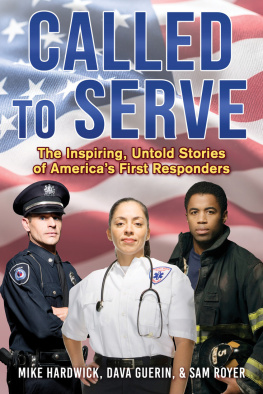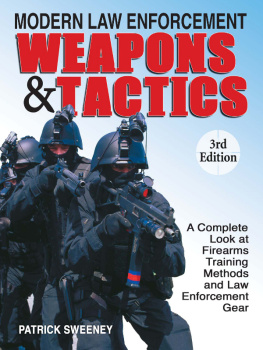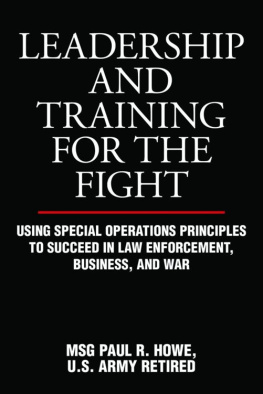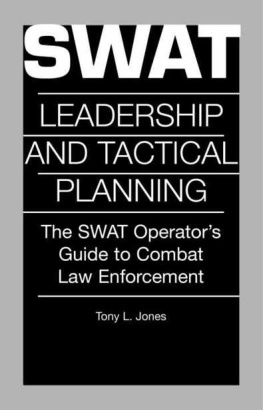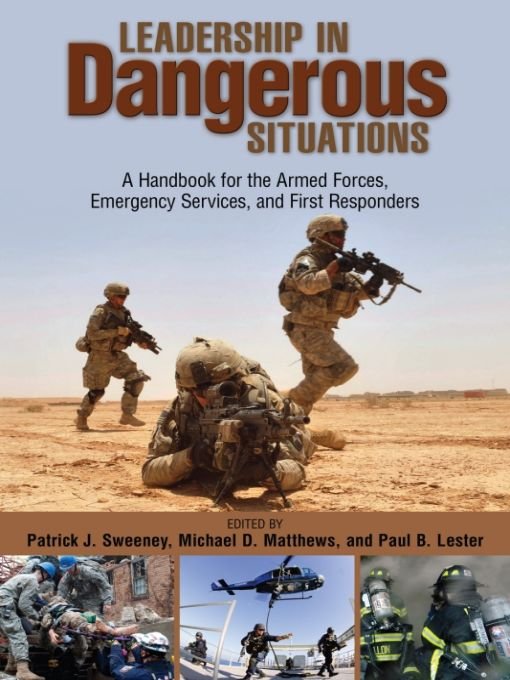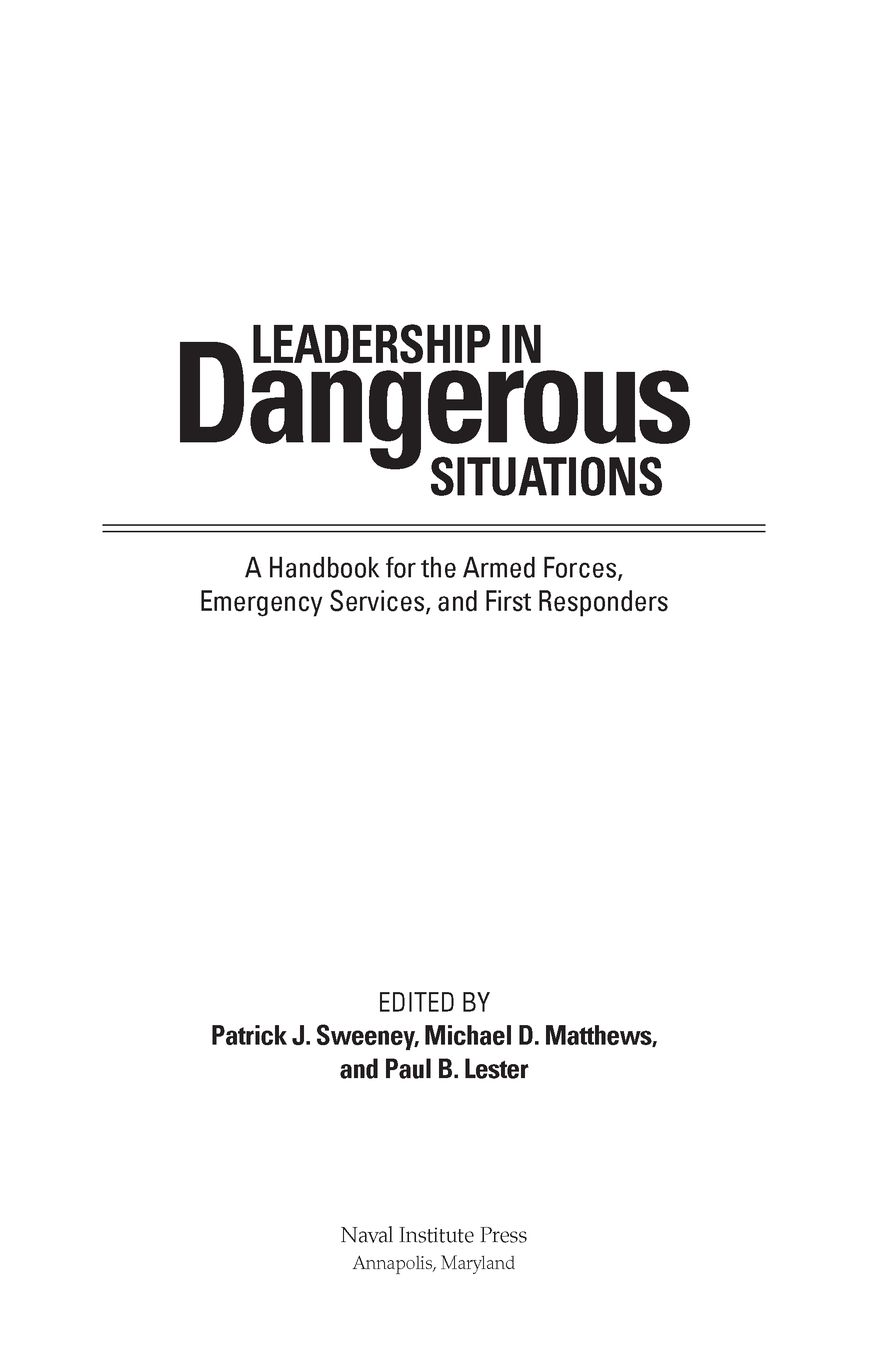Table of Contents
Table of Figures
This book is dedicated to the men and women who bravely and selflessly serve in harms way for the betterment of their communities and countries and those of others. Your service uplifts and helps make the world a better place in which to live.
FOREWORD
I have spent the better part of my lifethe last forty yearsworking to protect the lives and property of the citizens of New York City. I have held every uniformed rank in the New York City Fire Department, and I have seen firsthand its best and its worst times.
The worst day in department history was September 11, 2001. That day, fire, police, and EMS personnel carried out acts of unflinching heroism and rescued thousands from the burning World Trade Center towers. Unfortunately, hundreds of first responders made the supreme sacrifice while fulfilling that mission. We mourn them to this day.
Leadership is crucial in all organizations. Unlike in civilian organizations, where consequences are not as extreme, in the military and other uniformed organizations, members of the leadership share in the risks taken by those working below them. That was made abundantly clear on September 11, when members from all ranks died, including chiefs and other high-ranking personnel.
In my forty years as a firefighter and an officer, I have seen firsthand how critical quality leadership is to emergency responders moving into harms way. To risk their lives and safety, first responders must firmly believe in their leaders, know those leaders care for them, and have confidence that they can make good decisions quickly. This unique set of skills is called dangerous context leadership. Understanding how to operate and inspire in extreme circumstances greatly strengthens any organization, whether military or civilian. The contributions to Leadership in Dangerous Situations look at how to prepare leaders to fulfill their roles and how they motivate people to follow them, even in moments of extreme stress or danger.
This wonderful and unique book brings together dangerous context leaders and prominent scholars from around the world to explore the psychological, social, and organizational factors that influence leadership in critical situations. The first section focuses on how leaders can prepare themselves psychologically to handle the challenges they might face. It covers a range of topics, including building courage, managing stress, facilitating resiliency, mitigating post-traumatic stress disorder, promoting ethical awareness and reasoning, and finding meaning. The second section focuses on how to influence people who risk their lives to fulfill duties and examines such topics as trust, resilient teams, morale, influence, decision making, crisis leadership, and cross-cultural leadership. The third section addresses the organizational factors that facilitate leading in dangerous contexts, including developing a culture to operate under extreme conditions, recruiting and selection, and cultivating leaders.
Leadership in Dangerous Situations offers easily understandable guidance for leaders to prepare themselves and their organizations for the challenges of leadership and operating in dangerous environments. It has been written for the brave men and women who put themselves in harms way every day to protect and serve. I strongly believe this definitive book will contribute to enhancing the effectiveness of dangerous context leaders.
SALVATORE J. CASSANO
Fire Commissioner, City of New York
March 2011
ACKNOWLEDGMENTS
We want to thank the fifty-eight contributors to this volume, who are collectively the top thinkers in the theory and practice of leading in dangerous contexts. All of us are grateful to the U.S. Military Academy for providing a supportive and intellectually stimulating forum for exploring and advancing new ideas. In closing, we extend our gratitude to Gretchen Bain Matthews, our technical editor, for her tireless assistance in reviewing drafts of the manuscripts and keeping the editorial team organized and on track.
Introduction
CHAPTER 1
Leading in Dangerous SituationsAn Overview of the Unique Challenges
Patrick J. Sweeney, Michael D. Matthews, and Paul B. Lester
The idea for Leadership in Dangerous Situations: A Handbook for the Armed Forces, Emergency Services, and First Responders evolved from the editors collective experiences and research in dangerous contexts and from Patrick J. Sweeneys experience directing a course in combat leadership at the United States Military Academy, West Point. We discovered that the leadership literature lacked a comprehensive guide outlining how and why leadership is different in dangerous contexts; how to prepare oneself and followers for the unique challenges of operating in such contexts and how to recover following exposure to adversity; how to lead when group members face danger; and how to leverage organizational systems to facilitate group members resilience in the face of and after adversities associated with dangerous contexts. The intent of Leadership in Dangerous Situations is to fill the gap in the leadership literature by providing the brave men and women who risk their lives to serve the public a comprehensive and easily understandable guide, backed by research, to prepare themselves and their units for the unique psychological, social, and organizational challenges of leading and operating in dangerous contexts.
This book is written for the practitioner, in practitioners language. It teams international scholars with members of the military, law enforcement, and fire and rescue services to address the unique challenges faced by leaders in dangerous situations. Thus, each chapter integrates theory and research with practical experience to address the unique challenges leaders face while operating in dangerous environments. The blending of perspectives provides leaders with a clear understanding of and a guide to mastering the challenges of leading people when lives are in the balance.
WHO SHOULD READ THIS BOOK?
Whether you are a young leader preparing for war, a seasoned commander with multiple combat tours, a Special Weapons and Tactics (SWAT) team leader, emergency medical technician (EMT) supervisor, first-line supervisor of a law enforcement patrol unit, or a lieutenant responsible for a shift of firefighters, you are leading people in contexts in which life and death decisions are common. If a novice, you have likely asked,How will leading in these situations be different from others Ive faced.If a more experienced leader, you have likely asked, Why is leading in these situations different? With these questions in mind, our purpose here is to provide youa leaderwith a better understanding of what is required of you in dangerous contexts.
The contributing authors here delve into the psychological, social, and organizational factors that can impact your ability to lead, your followers ability to perform, and your organizations ability to accomplish its mission. In the end, you should take away not only an understanding of how leading in dangerous contexts is different from leading in situations where lives are not at risk, but you should also have a deeper understanding of why it differs, where commonalities exist, and perhaps more important, how to prepare yourself to lead and your organization to perform in dangerous contexts.



